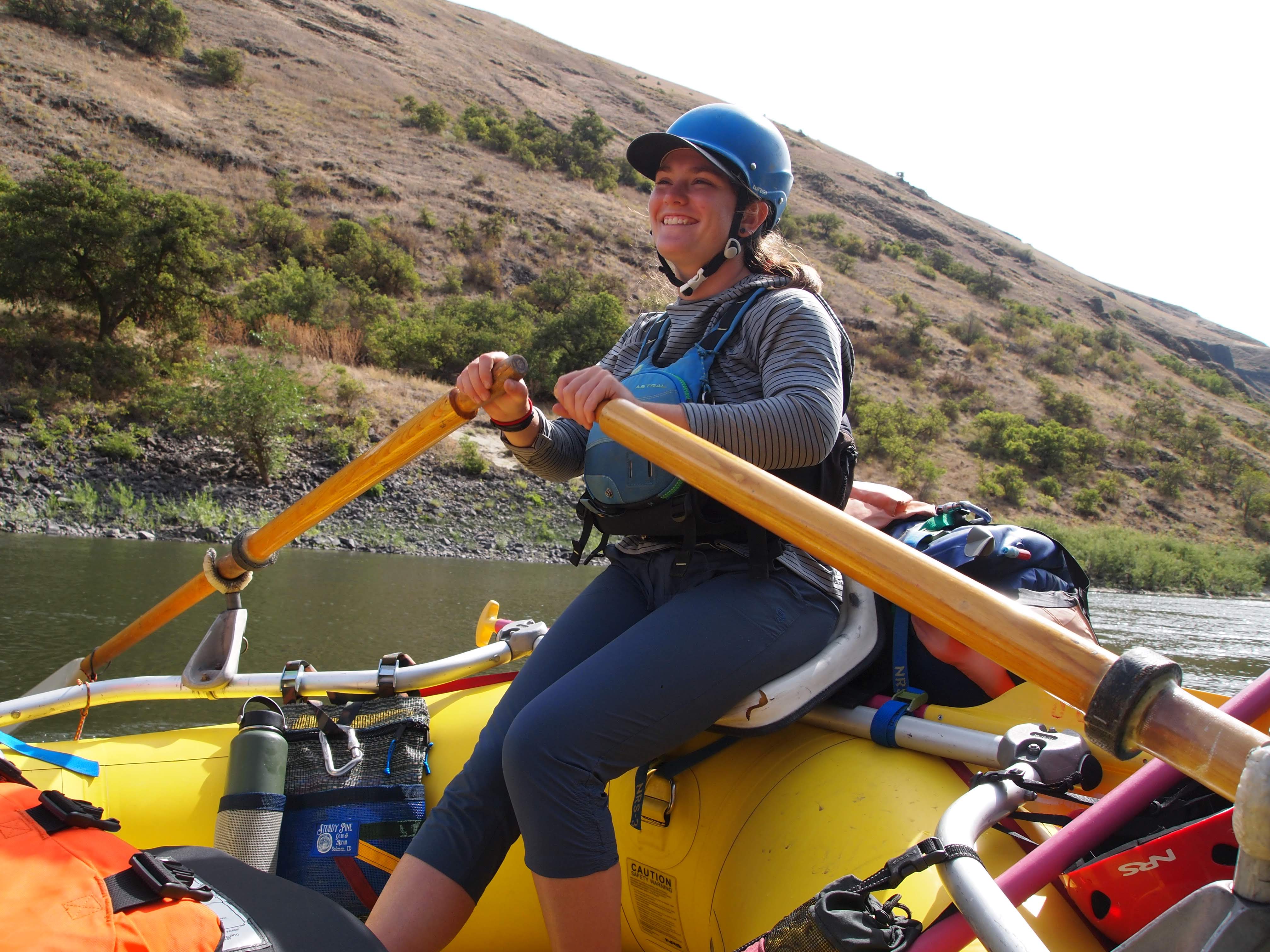
Professional River Guide, Rachel, during an OARS trip in 2019
©
By: Maria Blevins, PhD, Emily Ambrose, and Bekah Price
Many outfitters are interested in becoming more inclusive organizations for both their staff and customers. To help with this transformation guides, outfitter owners, consultants and researchers have joined together and created the A-DASH Collaborative. A-DASH stands for Anti-Discrimination and Sexual Harassment, and exists to provide guidance in the river community about how to transform organizational culture. Our goal is to train leaders how to prevent and respond to sexual harassment, and how to make work and play in the outdoors more fun for more people.
This article references research which has identified strategies female guides use to fit into their workplace culture; a suggestion to shift thinking about sexual harassment to a safety paradigm; and options for developing effective reporting systems in your organization.
Strategies Women Use to Fit In
Qualitative research conducted about raft guides who work on both single and multi-day river trips indicate the expectations of professionalism are different at a guiding company. The environment requires individuals to look past harassment and joking. Female guides must continuously negotiate their identity as women and professionals in a male-dominated environment in which individuals live and work together. Women are not alone in being sexually harassed or find themselves not “fitting in” with guiding culture. There must be continuous, inclusive conversation and strategies around belonging and retention for a variety of identities, including and not limited to trans and gender non-conforming guides and intersecting identities such as women of color and from different socioeconomic backgrounds.
To succeed in this environment, research participants outlined the following strategies that women use to be successful.
-
Be tough - The perception is that thin-skinned people do not last long in the industry, women need to be tough to fit in.
-
Be funny - By laughing off offensive comments and behaviors and making jokes, women can be easily accepted into the group.
-
Be crass - Guys think that women who can be a bit vulgar are easier to be around - this means they do not have to watch their own behavior and the women are perceived as more fun.
-
Be good at the job - Female guides felt they had to be exceptional. They expressed that they thought they were held to a higher standard than their male counterparts.
-
Warn each other - To keep others safe from predators, organizational members warned each other to stay away from individuals with a history of being unsafe for women.
-
...Or leave - Many participants described leaving guiding to pursue a job where the harassment in the culture is less blatant.
Recognizing the consequences of the harassment or the strategies that organizational members have adopted may help allies who want to end harassment see where it is happening, even if it is not being reported. A more robust understanding of the impacts of a culture of harassment could offer a new perspective on the consequences of harassment and a more nuanced understanding of organizational culture.
Address Sexual Harassment as Safety Preparation
By using the paradigm of safety preparation that outfitters are already familiar with, companies can think about four components organizations and outfitters need to address the culture of sexual harassment, using vocabulary that aligns with the safety preparation that they already use when thinking about safety.
-
Preparation – Adopt policy, reporting procedure, and code of conduct.
-
Prevention – Rely on training, stated (on website) policy, ongoing communication.
-
Mitigation – Employ strategies, apply policy with integrity, utilize your reporting procedures.
-
Follow-up – Remove the source, be accountable, communicate to appropriate parties.
A Few Starting Pointers for a Better Reporting System
An effective reporting system relies on more than a set of rules. It employs an inter relationship of trust and power within an organization. To build this system, like any trust relationship, you need:
-
communication and education for your entire organization.
-
commitment and consistency in messaging across your organization’s leadership.
-
reliability, transparency, and follow-up.
-
investment of resources, especially in those most targeted by harassment.
In conclusion, for now…
Discussions about harassment can be uncomfortable, but river professionals can call upon A-DASH to learn how to start a conversation about expectations, accountability and workplace culture. A-DASH, composed of river people who have first-hand knowledge of these pervasive issues, provides resources, training and facilitators owners, managers, guides and guests can rely upon.
While we know all of these topics cannot be addressed in one article, we hope you will take a look at the organization(s) with which you work and assess where effective work can be done.
We encourage you to review this additional article with resources, as well as visit a-dashcollaborative.org for more information and support in addressing these topics.
See you outside!